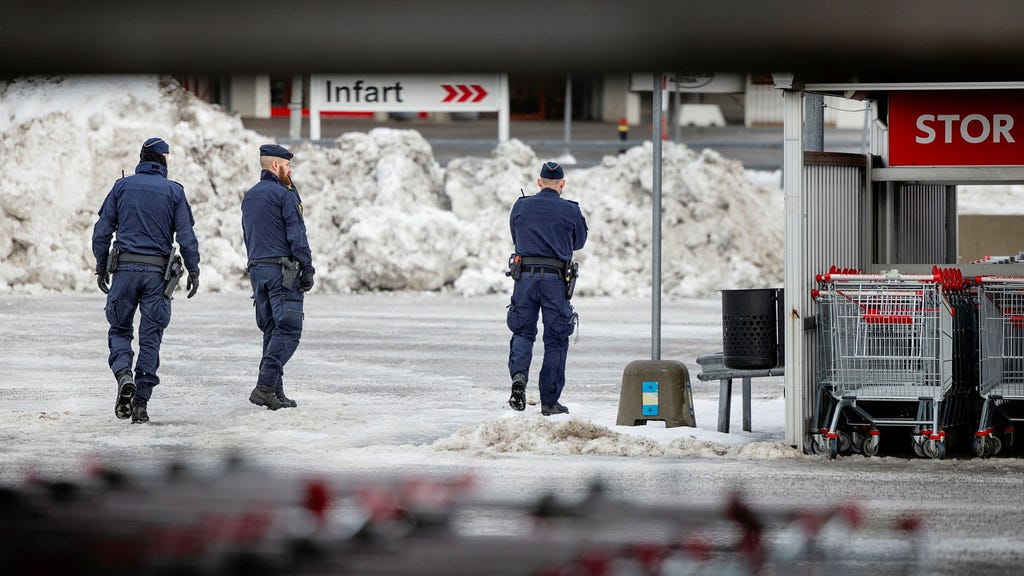The Unpredictable Nature of Random Acts of Violence
The murder of a 60-year-old woman in a Swedish supermarket sent shockwaves through the country, raising concerns about the seemingly random nature of such violent acts. While the investigation is ongoing, the working theory posits that this was a senseless act of violence perpetrated by a 26-year-old man with no prior criminal record, who seemingly chose his victim at random. This incident follows a string of similar violent events, including the fatal stabbing of a woman in her 30s and the murder of a 74-year-old woman, further fueling public anxiety and prompting discussions about the apparent rise in such unpredictable attacks.
Despite the heightened public perception of increased frequency, experts like Dr. Axel Haglund, a senior physician in forensic psychiatry, suggest that these incidents do not necessarily represent a statistically significant trend. Haglund emphasizes that these types of attacks remain a very small fraction of the overall homicides in Sweden, and the perceived increase might be attributable to a clustering of high-profile cases rather than a genuine surge in this specific type of crime. He further downplays the "copycat" phenomenon, arguing that while the concept exists, its influence within the Swedish context is minimal based on available evidence. This observation challenges the notion that media coverage of such events necessarily inspires further attacks.
Understanding the Perpetrators: A Diverse Group with Underlying Issues
Haglund describes the perpetrators of these random acts of violence as a heterogeneous group. A common factor, however, is the presence of underlying mental health issues, particularly psychosis, paranoia, and distorted perceptions of reality. These individuals often struggle to accurately interpret the world around them, leading to actions driven by their altered realities. This clinical perspective underscores the importance of recognizing and addressing mental health concerns before they escalate into violent manifestations. The fact that these individuals typically receive psychiatric care following their crimes highlights the potential for effective treatment and the possible preventative role of early intervention.
Beyond the group with diagnosable psychotic disorders, Haglund identifies a second, broader category of perpetrators who do not meet the criteria for severe mental disorders warranting forensic psychiatric care. These individuals are often characterized by social isolation, harboring resentment towards society, and experiencing difficulties integrating into social and professional life. This group encompasses a wide range of personalities and backgrounds, making it more challenging to pinpoint specific risk factors and preventative strategies. While online communities of "incels" (involuntary celibates) might be considered within this group, Haglund clarifies that clear connections to such groups have been rare in Swedish cases. He also distinguishes these perpetrators from psychopaths, whose violence tends to be instrumental and goal-oriented, rather than the impulsive, seemingly random acts characteristic of the group under discussion.
The Role of Mental Health and Societal Factors
The discussion of mental health in the context of these crimes raises concerns about potential stigmatization. Haglund emphasizes that the vast majority of individuals with mental illnesses are not violent and that certain conditions can even reduce the risk of violence. He cautions against generalizing the actions of a few to entire diagnostic groups, highlighting the negative impact such generalizations can have on individuals seeking help for their mental health challenges. This underscores the need for responsible reporting and public discourse surrounding mental illness and its relationship to violence.
Preventing random acts of violence presents a significant challenge due to the perpetrators’ tendency to conceal their plans. However, Haglund suggests certain warning signs that can alert family members and others to potential risks. These include distorted perceptions of reality, auditory hallucinations, and overt delusions. More subtle indicators like social withdrawal, expressions of aggression, and general malaise also warrant attention. He stresses the importance of actively engaging with individuals displaying such signs, seeking to understand their struggles, and facilitating access to appropriate support and treatment.
Addressing the Complexities of Violence Prevention
Prior history of violence and substance abuse, particularly involving narcotics and alcohol, are further risk factors to consider. The overwhelming prevalence of male perpetrators in these cases prompts questions about the role of societal factors. Haglund suggests that a reluctance among men to acknowledge personal difficulties and a tendency to externalize blame might contribute to their unwillingness to seek help. This perspective highlights the need for culturally sensitive approaches to mental health support, encouraging men to address their struggles and access available resources.
In conclusion, understanding and preventing random acts of violence requires a multi-faceted approach. While mental health issues play a significant role in some cases, other factors such as social isolation, resentment towards society, and difficulties integrating into mainstream life also contribute to the complex picture. Addressing these underlying issues, promoting early intervention for mental health concerns, and fostering a culture of open communication about mental health are crucial steps towards mitigating the risk of such tragedies. Furthermore, responsible media reporting and public discourse are essential to avoid stigmatizing individuals with mental illness and to encourage help-seeking behavior. The challenge lies in balancing public safety concerns with the need to protect the rights and well-being of individuals struggling with mental health challenges.














